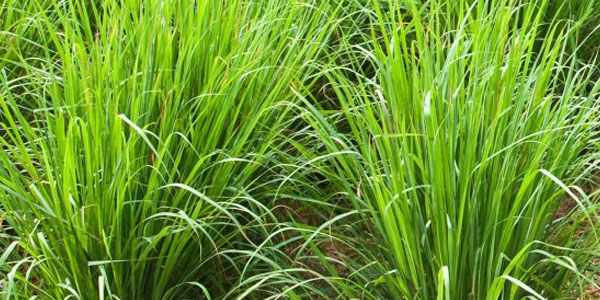USES
Palmarosa Oil is used in great quantity by Pharmaceutical industry. Oil of Palmarosa is used in perfumery, particularly for flavoring tobacco and for blending of soaps due to the lasting rose-note it imparts to the blend. It also serves as a source for very high grade Geraniol. Geraniol
is highly valued as a perfume and as a starting material for large chemicals, viz., geranylesters that have a permanent rose-like odor.
Apart from being used by Cosmetic (Beauty Products) And Perfumes Manufactures, Palmarosa oil is also used in the manufacturing of various medicines. The oil is rich in the active compound geranial, which makes it suitable for many medicinal and household purposes. Palmarosa oil is antifungal, anti-viral, bactericide, cytophylactic and antiseptic. Its application on skin moisturizes the skin, besides balancing the hydration levels and stimulating cell regeneration. Palmarosa oil also helps in clearing up minor infections and prevents ugly scarring in healing wounds. (Ssp group) Palmarosa oil calms the mind, yet has an uplifting effect, while clearing muddled thinking. It is used to counter physical and nervous exhaustion, stress-related problems and nervousness. Palmarosa oil could be used with good effect on the skin, for nervous and stress-related problems and for the digestive system. Therefore, because of its utilities and uses in perfumery and pharmaceutical industry, it is in demand not just in the Domestic market about also internationally. Hence, Palmarosa Cultivation is highly beneficial for the Indian farmers.
PALMAROSA OIL MARKETING STRATEGY
Palmarosa Oil has wide uses because of which it marketing is fairly easy. There are quite a few Merchant based in Delhi & Mumbai was purchase Palmarosa in wholesale and there are also quite a producers also for Palmarosa. Therefore, in the coming decade, there are great possibilities of increasing the sale of Palmarosa.
It has been proved that Palmarosa is useful from different aspects. Cultivation of Palmarosa can be done in a variety of soils in fact in infertile land also. Even if the Land has low water content and is less watered, Palmarosa can be cultivated. The plant of Palmarosa doesn’t get affected by diseases, the maintenance is low and because of its popularity domestically and internationals, marketing Palmarosa is also easy. Hence, its cultivation is extremely beneficial for farmers.
DIFFERENT SPECIES OF PALMAROSA
I.W – 31245 and C.I. 80-68 produced by Indore Centre i.e. Motia and Sophia are the two varieties of Palmarosa. Trusha Vruta and P.R.C – 1 Motia is also popular about farmers.
PREPARING THE SOIL/ TILLAGE
Plough the field at least twice for aeration. Use about 8-10 tons of manure and 8kgs per 10% B.H.C per acre. Trowel and level the field so that there is no water logging. (Ssp group)
MANURE/ PESTICIDES/ FERTILIZERS
For better yield in non irrigated condition use 12 kg of Nitrogen, Phosphate (P2O5) and Potash per plant or between the trowels. The remaining part i.e. 6kgs should be given after a span of 30-40days. (Ssp group)
SEEDING / IRRIGATION PROCESS
Palmarosa can be grown in both well irrigated and non-irrigated conditions. In case of, not well irrigated conditions the yield depends on yearly rains but for well irrigated conditions, where the weather conditions are warm, then irrigate the land in intervals of 12-15 days or once in 3weeks for best yield. Flood irrigation is the best and modern way if irrigation for Palmarosa
SEEDING / IRRIGATION PROCESS
For better yield in non irrigated condition use 12 kg of Nitrogen, Phosphate (P2O5) and Potash per plant or between the trowels. The remaining part i.e. 6kgs should be given after a span of 30-40days. (Ssp group)
WEEDING PROCESS
Weeding process should be carried 2-3 times to get rid of unwanted plants.
HARVESTING & CLEANING PROCESS
For best yield of oil from Palmarosa plant, start harvesting or cutting the plant immediately after flowering. Cut the plant 10-15cms from the ground level. Collect and mould the plant and store them in a cold place. (Ssp group) Then through distillation process extract the oil from the plant.
AVAILABILITY OF LEMON GRASS OIL
Maximum oil is extracted from the Flowers and leaves of the plant and very less quantity of oil is extracted from the stem. The yield in the first year, 0.5-0.6% oil is extracted from the each plant .i.e. about 12-16kgs oil per plant in non-irrigated and 20-30kgs per plant in irrigated land. The yield in subsequent years goes up to, 20-30kgs per acre in non irrigated area and 40-45kgs per acre in irrigated conditions.
